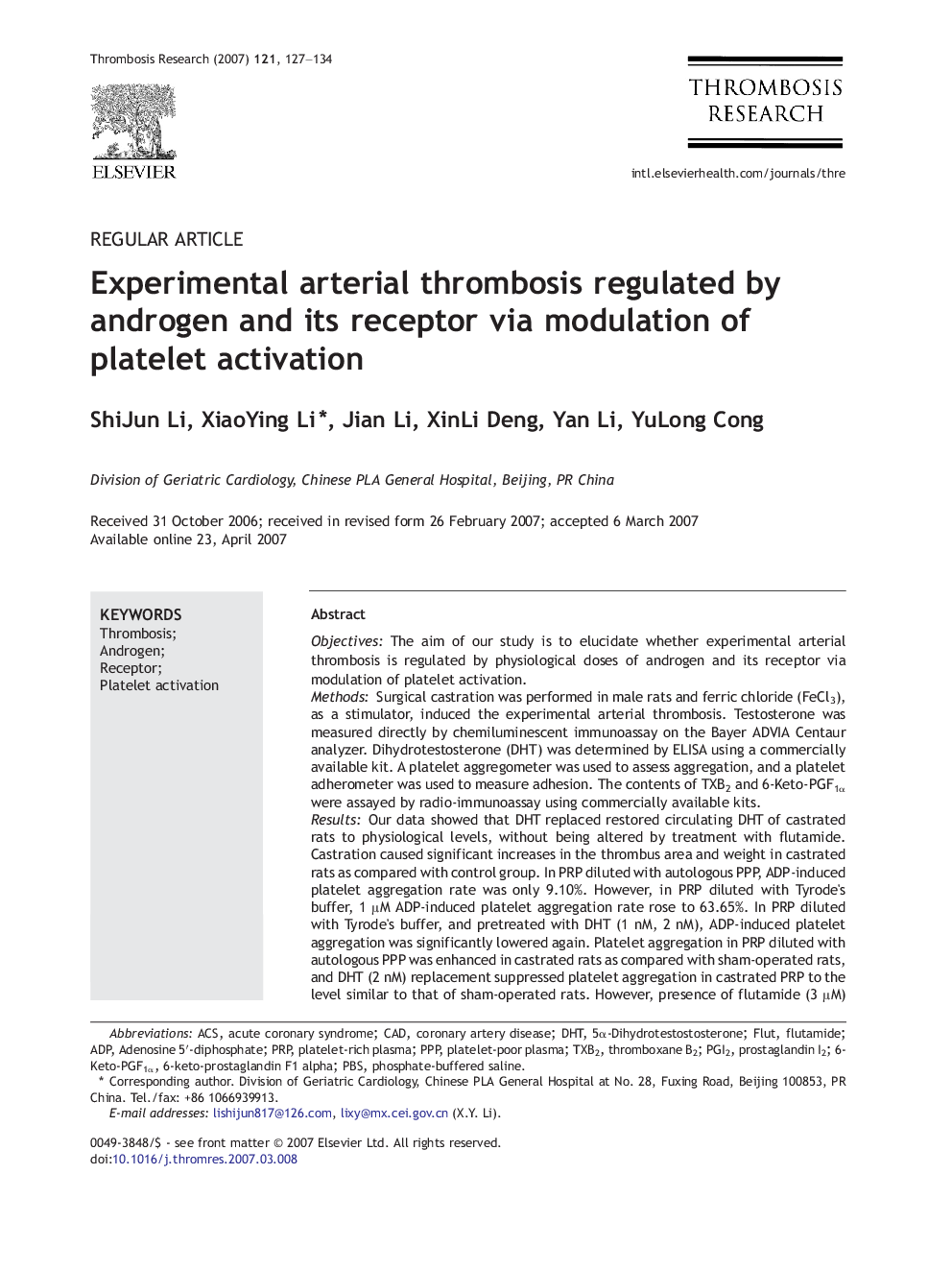| Article ID | Journal | Published Year | Pages | File Type |
|---|---|---|---|---|
| 3028810 | Thrombosis Research | 2007 | 8 Pages |
ObjectivesThe aim of our study is to elucidate whether experimental arterial thrombosis is regulated by physiological doses of androgen and its receptor via modulation of platelet activation.MethodsSurgical castration was performed in male rats and ferric chloride (FeCl3), as a stimulator, induced the experimental arterial thrombosis. Testosterone was measured directly by chemiluminescent immunoassay on the Bayer ADVIA Centaur analyzer. Dihydrotestosterone (DHT) was determined by ELISA using a commercially available kit. A platelet aggregometer was used to assess aggregation, and a platelet adherometer was used to measure adhesion. The contents of TXB2 and 6-Keto-PGF1α were assayed by radio-immunoassay using commercially available kits.ResultsOur data showed that DHT replaced restored circulating DHT of castrated rats to physiological levels, without being altered by treatment with flutamide. Castration caused significant increases in the thrombus area and weight in castrated rats as compared with control group. In PRP diluted with autologous PPP, ADP-induced platelet aggregation rate was only 9.10%. However, in PRP diluted with Tyrode's buffer, 1 μM ADP-induced platelet aggregation rate rose to 63.65%. In PRP diluted with Tyrode's buffer, and pretreated with DHT (1 nM, 2 nM), ADP-induced platelet aggregation was significantly lowered again. Platelet aggregation in PRP diluted with autologous PPP was enhanced in castrated rats as compared with sham-operated rats, and DHT (2 nM) replacement suppressed platelet aggregation in castrated PRP to the level similar to that of sham-operated rats. However, presence of flutamide (3 μM) significantly increased platelet aggregation in PRP diluted with autologous PPP or Tyrode's buffer. DHT (2 nM) replacement significantly inhibited the ADP-induced platelet adhesion. However, presence of flutamide (3 μM) increased ADP-induced platelet adhesion again. DHT replacement obviously reduced the ratio of TXB2 to 6-keto-PGF1α in castrated rats. However, administration of flutamide and DHT to castrated rats caused an increase in the ratio of TxB2 to 6-keto-PGF1α.ConclusionInhibition of experimental arterial thrombosis by androgen at physiological doses and its receptor is mediated via modulation of platelet activation.
